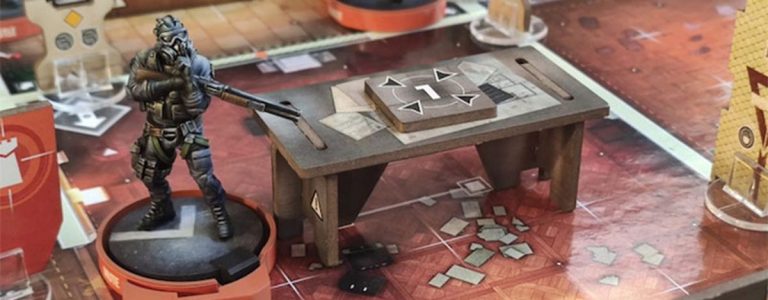As Spider-Man 2 swings onto PS5 in the third Insomniac game, the shackles are off on the technological baseline now that there’s no PS4 version to support. Traversal speed is more than twice the previous maximum, with you able to literally fly around New York like a spider bat. Miles and Peter can now catapult themselves, cannonball style, through the skies like Sonic, and yet it never causes issues on the PS5’s blistering memory and SSD speeds, allowing it to stream in even higher traffic, building, and pedestrian density. Water has been a key improvement over the prior games, with full geometric surface bodies now morphing and wrapping around boats and characters and playing a bigger role in the city interaction, your traversal, and even some key action scenes.
Ray tracing is not only improved, with reflection quality and materials increased over the previous remasters, but they are also integral to the art design and are enabled in both performance and fidelity modes. Those same water bodies now use a mix of ray tracing and cube maps rather than the old SSR solution, amplifying water quality significantly. Many of the updates we saw in the remaster are here, such as the AI-generated muscle deformation system which significantly improves suit animations and provides more human shapes and tension; also, that’s a key aspect for Venom’s morphing powers. This remains a consistently impressive effect as it’s incorporated into combat skills throughout your play.
Two Is Better Than One – Modes of Play
With PS4 out of the equation we see two modes: Fidelity is the default and remains the showcase with its capped 30fps frame rate and dynamic resolution scaling, often being close to 4K, with the low point being a counted 3200x1800p. Character models, facial animation, and emotional nuance are all improved – an evolution of the previous games, not a revolution – but when your baseline looks this good you are not in dire need of one. Insomniac’s own hair spline technology has been improved far more though, with Peter, Mary Jane, and Miles hair having more bounce and body than a Baywatch episode. MJ is the star of the show though, with her hair volume and physics being amongst the best. She has several wardrobe changes throughout the story, and yet clipping is almost non-existent. Complemented by more RT reflections than a cutlery drawer, the physics-based rendering (PBR) materials still balance the line between the Uncanny Valley well. This makes the 30fps cap a much easier pill to swallow, aided by an improved per-pixel motion blur.
Fear not 60fps fans: all of that remains in effect in the Performance mode, with no need for a non-RT performance mode anymore. We see similar reductions as before, with the resolution ceiling now at 2560x1440p, which it can hit often (more so in the real-time cutscenes) and a new low of 1920x1080p, but it is often at the higher end of this range. Like Fidelity mode, Performance uses Insomniac’s temporal injection tech to reconstruct and clean the image up to that maximum when it dips below. In addition, RT reflections, although present, use a lower bounding volume hierarchy (BVH) range & quality along with less surfaces reflecting or at least a higher roughness cutoff. Shadows, ambient occlusion, and hair quality are also reduced a little, as are texture in places – likely as a result of resolution. But these are minor sacrifices to make when compared to doubling the performance, with the same high-octane action, blistering travel, and wild spectacle. Performance mode is pretty much locked at 60fps, aside from similar hiccups in our tests and a decline to the mid 50s during the bigger moments, but those are often brief and rare.
Unlocking The Potential
As before, Insomniac have not stopped here: 120Hz screen owners are offered a 40fps fidelity mode, halving the gap between 30 and 60, with 25ms frame time being exactly in the middle. It loses none of the quality but gains even higher performance. Variable rate refresh (VRR) screens are also catered to, pushing the Fidelity mode to a new maximum of 50fps, with a more aggressive dynamic resolution. Scale employed sacrificing a slightly lower base for sometimes 66% higher frame rates, although often 40+ is the readout.
Performance mode is not left in the gutter, either – it includes a slightly wider dynamic resolution range that can now hit 1792x1008p, though lower is always possible. The benefit is that framerate can now hit 100fps. It is often closer to 70fps in action, but the extra fluidity and response it offers with such a minor cut over the 60fps capped mode gives us a peak into the full potential of the PS5 lurking behind that mode. A full 120fps is not possible here – we’re largely CPU limited during gameplay I would suspect, as cutscenes tend to push into the highest rates. However, the increased response on a VRR screen can be a welcome bonus for many and remains a great benchmarking mode to see the PS5’s first-party potential.
Performance in Fidelity – and even 40fps Fidelity mode – is largely a locked affair aside from small dips in cutscene switches and some minor stutter between shots. The unlocked mode is great, but a VRR screen is required as the variable rate improves input latency, and due to the 60 to 70fps range it is a small but noticeable boost on player control and fluidity.
Building on the Amazing
Some rougher edges do remain. Alpha effects can have mixed results and quality, specifically in smoke. Ray traced geometry is largely great, but some obvious low triangle count and bugs can crop up within the BVH proxy objects, and incidental buildings and textures can vary in quality, although the speed at which all of this hurtles past makes them a minor blemish.
Meanwhile, the density of the city has increased while world detail is less progressive. The updates to the core engine technology are iterative rather than transformative. Polygon count has not significantly increased, with a big reliance on normal maps and textures for details. The visual aspects and quantity have increased, however, it can still have a cross-generational look on some nondescript objects, such as fruit, books, pillows, NPCs, etc with the low poly count objects being apparent. In the city there’s a strong and understandable reliance on 2D imposters for trees, buildings, cars and other elements that can crop up from time to time. Performance mode is where level-of-detail transitions from these imposters to 3D building, trees and even grass at close range can fade into existence more obviously. Some of the excellent animation and facial expression can look a little odd on occasion, with head movement and mouth sync being one area I noticed in a few sections, but this is edging heavily into the nitpicking area.
As a major game for the PS5, Spider-Man 2 builds on the amazing base that prior games delivered and manages to exceed the Remaster and Miles by offering excellent enhancements in key areas, such as a slick & seamless fast-travel system, and over double the traversal speed of the previous PS5 game. That, along with dramatically improved water, hair, lighting, and art all impressed me throughout my play.
Summary
Spider-Man 2 is, on paper, the perfect sequel. It takes all of the elements that made the first games so much fun and builds and improves on them. Bigger battles, improved ray tracing, wider story choices, more flamboyant combat, dual characters, improved visuals, staggeringly fast and dense city travel are all excellent. The sheer wow factor it delivers will impress, but some of the shine is dulled by comparison to Insomniacs own previous success and work on the remasters of the original and Miles Morales for PS5. Going from the original PS4 or even PS4 Pro Spider-Man games to this is a night-and-day difference in almost all areas, with the most noticeable being seamless loading, ray tracing, AI muscle deformation, vast performance increases and visuals that push the PS5 hard. But from the PlayStation 5 updates, the leap is smaller, if still impressive. None of this diminishes the excellent, varied and amazing game within, but just how amazing that is depends on when you last slipped into the tights of New York’s favourite web head.
























